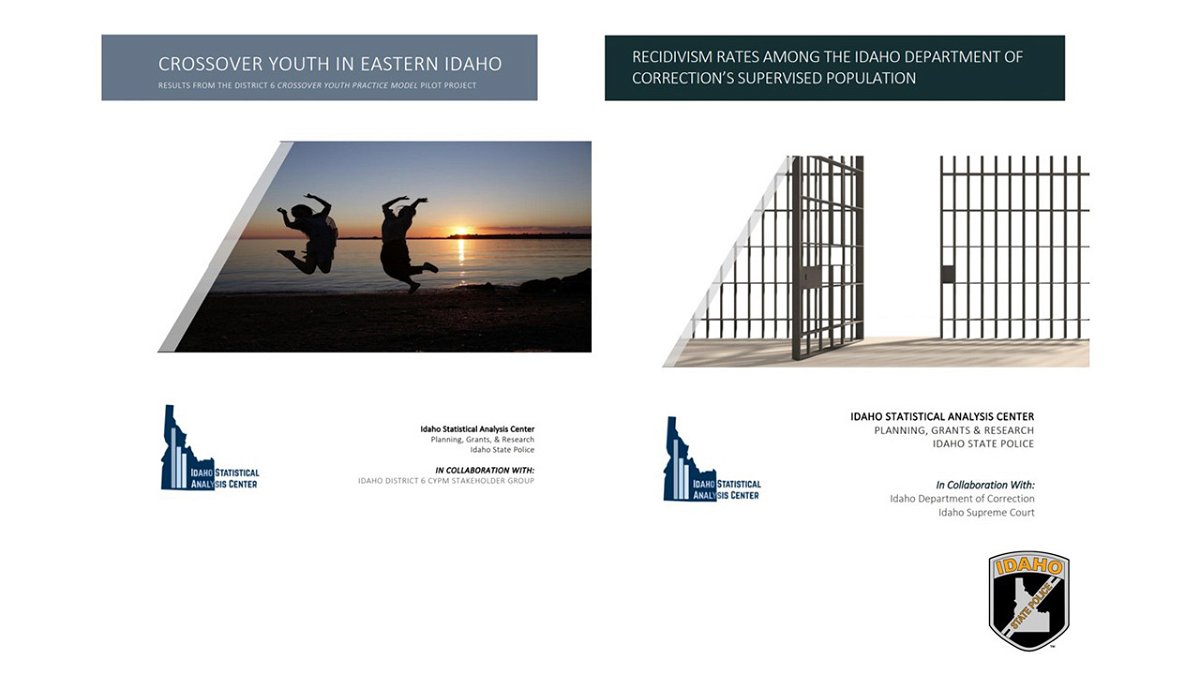ISAC releases 2 new research reports

BOISE, Idaho (KIFI) - The Idaho Statistical Analysis Center (ISAC) announced the recent release of two new research reports intended to help improve public safety and assist Idahoans involved in the criminal justice system.
The reports focus on a pilot project involving crossover youth and recidivism rates among Idaho's felony offenders. Both reports were paid for by a grant from the U.S. Bureau of Justice Statistics.
Crossover Youth in Eastern Idaho: Results from the District 6 Crossover Youth Practice Model Pilot Project
This report presents the results of a pilot project in Bannock, Onedia, and Power Counties. Stakeholders from across the juvenile justice and child welfare systems came together in 2019 to begin implementing the Crossover Youth Practice Model (CYPM). Fully implemented in February 2020, the CYPM aims to better serve these youth by streamlining services for "crossover youth", defined as youth involved in both the juvenile justice and child welfare systems.
The CYPM is bringing together stakeholders from both systems to create joint case management plans that provide the most appropriate services to crossover youth in a more efficient manner. The ISAC study found evidence of the pilot project's success, in that youth who "crossed over" after the CYPM was implemented experienced better outcomes on a wide range of measures as compared to youth who crossed over prior to CYPM implementation.
"Our hope is this report will be reviewed by stakeholders statewide, including by those who are already taking steps to better support these youth. The CYPM has been a lot of work for the stakeholders in these counties, but the data we found shows it's working." Said Thomas Strauss, Principal Research Analyst with the Idaho Statistical Analysis Center.
Read ISAC's report on the CYPM pilot project here.
Recidivism Rates Among the Idaho Department of Correction's Supervised Population
This ISAC study presents results of a large recidivism study of felony offenders in Idaho. ISAC used data from the Idaho Department of Correction (IDOC) and the Idaho Supreme Court (ISC) to determine 3-year recidivism rates among felony offenders in Idaho, utilizing five definitions of recidivism.
"Studying recidivism impacts future victims of crime and also aids those working to create more positive, productive outcomes for those being released from Idaho prisons. This study identified trends and also confirmed the need for more study in this area with the potential to have a profound impact on the lives and safety of Idahoans," said Strauss.
ISAC used a series of analyses to determine actual and expected recidivism rates, as well as predictive demographic factors, for a group of more than 40,000 felony offenders under IDOC supervision between 2010 and 2017. Expected recidivism rates ranged from a low of 10% (technical probation/parole violations) to a high of 41% (charged with a new crime) three years after being released to the community from prison or being placed on probation. Slightly less than half of those recidivism events occurring within the first year.
Across all recidivism types studied, demographic analysis showed being younger and male significantly increased the odds of an offender experiencing a recidivism event within their first three years in the community. The wide range in recidivism rates across the five definitions used in this study has implications for how recidivism should be studied in Idaho in the future, which ISAC also outlines in the report.
Read ISAC's analysis of recidivism among Idaho's felony offenders here.






